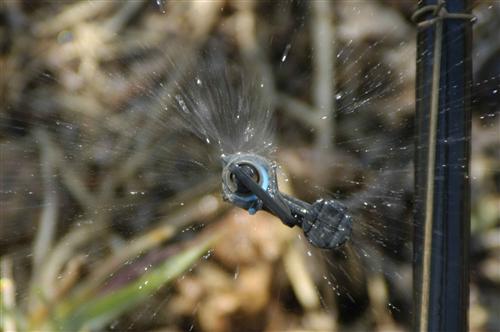Climate change in southern Africa is predicted to bring increased weather-related catastrophic events, with estimates putting increases at three times greater than the number non-weather related events (McMullen and Jabbour 2009).
The information provided below is part of a study undertaken by CESR at the University of Kassel, Germany. The study aimed to model and assess the impact that climatechange will have on water availability as the climate changes and population increases (increasing demand). The modelling team conducted an assessment of the current situation, based upon historical records from 1961 - 1995, then two additional time steps, 2055 and 2075.
The assessment includes the following analysis:
-
Water availability (km³/yr) - Long term average potential water availability of the river basin calculated under consideration of the 1961-90 climate normal and the IPCC SRES A2 climate scenarios for 2055 and 2075. Here, surface runoffand groundwater recharge are combined.
-
Total water demand (km³/yr) - 1995 and future total water withdrawals includes the withdrawals for the domestic, industry, irrigation, and livestock sectors. The water requirements for irrigation are computed using the climate normal 1961-90 period and the A2 climate scenarios for 2055 and 2075.
-
Ratio of Water Availability to Demand (%) - divides total annual water withdrawals (water abstracted from surface or groundwater sources) by total annual water availability on a river basin scale. This water stress indicatordescribes the intensity of pressure put on water resources and aquaticecosystems by external drivers of change. The larger the volume of water withdrawn, used and discharged back into a river, the more it is degraded or depleted, and the higher the water stress.
More information on the IPCC SRES A2 climate scenario can be found at the UNEP GRID website. The CESR team also conducted assessments using the B2 climatescenario, but in the interests of space only 1 assessment is shown here.
As can be seen from these time series data, the water availability reduces, as water demand increases, resulting in an intensification of water scarcity over time.
The Orange Senqu River Basin
As described earlier, precipitation and evaporation are primary elements of the hydrological cycle, with temperature regimes determining the amount and distribution of evaporation. The UNDP-GEF (2008) summarises these changes and the regional implications for the Orange-Senqu River basin as shown in the box below.

Climate change is certain to increase focus on water use efficiency in all water use sectors.
Source:Vogel 2009
( click to enlarge )
As described earlier, precipitation and evaporation are primary elements of the hydrological cycle, with temperature regimes determining the amount and distribution of evaporation. The UNDP-GEF (2008) summarises these changes and the regional implications at the basin level as shown in the box below:
Box : Climate Change and the Regional Implications in the Orange-Senqu River Basin.
Temperature changes: A clear cluster of warming from almost every analysis relating to the Western Cape (including the Lower Orange sub-basin) is reported. Another finding is a less severe frost season over the Free State (incorporating the Vaal sub-basin of the Orange-Senqu River) and Northern Cape (incorporating the Middle Orange sub-basin and lower reaches of the Nossob sub-basin). While certain changes are evident in temperature parameters, the changes are not uniform across southern Africa.
Precipitation changes: Regarding specific observations relevant to the Orange-Senqu basin, the following statements can be made:
-
Increases in both hydrological responses and rainfall are evident in the winter rainfall region of South Africa (incorporating the Lower Orange sub-basin).
-
Decreases in hydrological responses and rainfall are evident in the southern and western parts of the Vaal sub-basin, and the southern parts of the Nossob sub-basin.
A number of quaternary drainage regions (catchments) in the Orange primary drainage region show decreases in the highest annual rainfall in 10 years when comparing the periods 1980–1999 and 1950–1969. However, not all areas of Orange-Senqu River basin are currently experiencing changes in rainfall, and where they are being experienced, the direction of rainfall change is not uniform across the basin.
Streamflow changes: Streamflow is not an easily measured variable, as it has many interactive drivers and is highly sensitive to changes in precipitation. It can be summarised as:
-
Streamflows in the ‘driest’ year in 10 have increased in some areas of the Orange-Senqu basin – notably the Lower Orange, Middle Orange, southern Nossob sub-basins and a large part of the Vaal sub-basin.
-
Accumulated streamflows in the “wettest” year in 10 have increased over much of the summer rainfall region, but with a notable decrease over the Vaal sub-basin.
-
Winter month flows have increased in the “driest” season in 10 in the winter rainfall region (incorporating the Lower Orange sub-basin).
-
The range of flows between low- and high-flow years, indicative of a change in flow variability, has generally increased over the summer rainfall region.
-
Periods of highest summer flows have tended to be later by 1–2 months over much of the central and eastern parts of southern Africa (the Middle Orange, Orange-Senqu and Vaal sub-basins).
Irrigation impacts: A few catchments in South Africa show an increase in median annual gross irrigation demands in the later period, while others show a decrease in the later period, and these increases and decreases are predominantly in the magnitude of 10–30%. No large clusters of quaternary drainage regions showing either an increase or decrease in the later period are evident. However, it is of interest to note that all quaternary drainage regions showing a change occur in the summer rainfall region. In their comparison of the median winter months (May to September) for gross irrigation demands in 1950–1969 vs. 1980–1999, the Upper Orange primary drainage region has a grouping of quaternary drainage regions, which show an increase in the later period.
(UNDP-GEF 2008)
